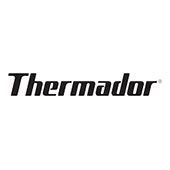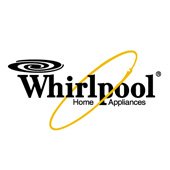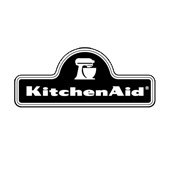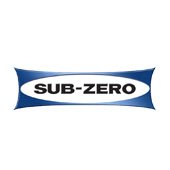What Is the Oven Self Clean Feature?
The self-clean oven feature is a convenient function found in many modern ovens, designed to ease the task of cleaning. Premier Appliance Repair techs find using self cleaning option on older units, improperly installed wall ovens that have poor air circulation, no maintenance performed could be a big problem and costly repairs. If you experience problem after using this option contact us-We are here to help.www.
This feature uses high temperatures and a good amount of time to burn off food residue and spills inside the oven, turning them into ash. This cycle can last anywhere from two to six hours, depending on the oven. However, some ovens offer other ways to self-clean, including using a steam cleaning option.

How Does an Oven Self Clean?
The self-cleaning option in an oven works by using extremely high temperatures, 500 degrees Fahrenheit or higher to incinerate food particles and spills into ash. When activated, the oven locks its door and heats up far beyond normal cooking temperatures. This intense heat breaks down and oxidizes the residue inside the oven. The process typically takes a few hours, during which the oven generates a lot of heat, and some smoke may be emitted as food residues are burned away. After the cycle completes and the oven cools down, the remaining ash can be easily wiped away, leaving the oven interior clean.
How to Use Oven’s Self Clean Feature
Using an oven's self-clean feature is a straightforward process that can be broken down into three main steps. Here's how to do it:
1. Prepare for the Cleaning
Before starting the self-clean cycle, remove all items from the oven, including racks, as extreme heat can warp or discolor them. Wipe away any large food particles or heavy spills with a damp cloth to minimize smoke during the cleaning process. Ensure the area around the oven is well-ventilated to handle any smoke that may be produced. Also, keep pets and children away from the kitchen during the cleaning cycle for safety.
2. Initiate the Self-Cleaning Cycle
Most modern ovens lock automatically when the self-clean function is activated. However, if your oven doesn’t do this, it’s important to lock the oven door manually for safety. Then, set the self-clean cycle according to your oven's instruction manual. This is typically done by pressing a dedicated self-clean button and then setting the duration, which can vary depending on how dirty the oven is or what model of oven you have. Once set, the oven will heat up to a very high temperature to incinerate food residue.
3. Perform Any Post-Cleaning Tasks
After the cycle is complete, wait for the oven to cool down completely before opening the door. This can take a few hours. Once cooled, you’ll find a layer of ash on the oven's bottom. Wipe this away with a damp cloth or sponge. If needed, you can use a mild detergent for any stubborn spots but try to avoid harsh chemicals or abrasive materials.

When to Use Your Oven’s Self Clean Feature
There are a number of times it’s helpful to use self cleaning option including:
 After Heavy Use: Utilize this feature after extensive cooking sessions, like preparing a large holiday feast. These occasions often leave significant amounts of baked-on food residue and grease, which the self-clean cycle is adept at handling.
After Heavy Use: Utilize this feature after extensive cooking sessions, like preparing a large holiday feast. These occasions often leave significant amounts of baked-on food residue and grease, which the self-clean cycle is adept at handling.
 For Scheduled Maintenance: To maintain oven efficiency and hygiene, use the self-clean function as part of your regular kitchen appliance maintenance. Doing this every 3-6 months, depending on usage, helps keep your oven in optimal condition.
For Scheduled Maintenance: To maintain oven efficiency and hygiene, use the self-clean function as part of your regular kitchen appliance maintenance. Doing this every 3-6 months, depending on usage, helps keep your oven in optimal condition.
 When there is Visible Buildup: If you notice a considerable accumulation of grease, food splatters, or grime that can't be easily cleaned with a cloth or sponge, the self-clean feature can effectively break down this debris.
When there is Visible Buildup: If you notice a considerable accumulation of grease, food splatters, or grime that can't be easily cleaned with a cloth or sponge, the self-clean feature can effectively break down this debris.
When NOT to Use Your Oven’s Self Clean Feature
There are also a number of times when it’s better to NOT use your oven’s self-clean feature, including:
 Before Major Events: Avoid using the self-clean feature right before hosting significant events or cooking important meals. The high temperatures can stress oven components, potentially leading to malfunctions or breakdowns at inopportune times. Oven self clean can also emit an unpleasant smell, which is not favorable when hosting guests.
Before Major Events: Avoid using the self-clean feature right before hosting significant events or cooking important meals. The high temperatures can stress oven components, potentially leading to malfunctions or breakdowns at inopportune times. Oven self clean can also emit an unpleasant smell, which is not favorable when hosting guests.
 For Small Spills: For minor spills or light soiling, manual cleaning is often more practical. Self-cleaning for small messes can be overkill and is less energy-efficient than a quick wipe-down.
For Small Spills: For minor spills or light soiling, manual cleaning is often more practical. Self-cleaning for small messes can be overkill and is less energy-efficient than a quick wipe-down.
 When there is a Lack of Ventilation: If your kitchen doesn't have good ventilation, avoid using the self-clean feature. It can produce smoke and fumes, especially when burning off substantial food residues, which can be hazardous in poorly ventilated spaces.
When there is a Lack of Ventilation: If your kitchen doesn't have good ventilation, avoid using the self-clean feature. It can produce smoke and fumes, especially when burning off substantial food residues, which can be hazardous in poorly ventilated spaces.
 If Your Oven Is Very Old: Older ovens or those with pre-existing problems might not withstand the extreme temperatures of the self-clean cycle. The intense heat can exacerbate issues like faulty door locks or weak heating elements, leading to breakdowns. If your oven is aging or has had previous malfunctions, it's safer to opt for manual cleaning to avoid the risk of damaging the appliance further.
If Your Oven Is Very Old: Older ovens or those with pre-existing problems might not withstand the extreme temperatures of the self-clean cycle. The intense heat can exacerbate issues like faulty door locks or weak heating elements, leading to breakdowns. If your oven is aging or has had previous malfunctions, it's safer to opt for manual cleaning to avoid the risk of damaging the appliance further.
- APPLIANCE REPAIR BONITA, CA
- APPLIANCE REPAIR NATIONAL CITY, CA
- APPLIANCE REPAIR SPRING VALLEY, CA
- APPLIANCE REPAIR DEL MAR, CA
- APPLIANCE REPAIR EL CAJON, CA
- APPLIANCE REPAIR ENCINITAS, CA
- APPLIANCE REPAIR LA JOLLA, CA
- APPLIANCE REPAIR LAKESIDE, CA
- APPLIANCE REPAIR POWAY, CA
- APPLIANCE REPAIR RANCHO SANTA FE, CA
- APPLIANCE REPAIR SAN LUIS REY, CA
- SAN DIEGO APPLIANCE REPAIR
- APPLIANCE REPAIR SANTEE,CA
- APPLIANCE REPAIR SOLANA BEACH, CA
- APPLIANCE REPAIR HILLCREST, CA
- APPLIANCE REPAIR POINT LOMA, CA
- APPLIANCE REPAIR OCEAN BEACH, CA
- APPLIANCE REPAIR MISSION VALLEY, CA
- APPLIANCE REPAIR PACIFIC BEACH, CA
- APPLIANCE REPAIR BAY PARK, CA
- APPLIANCE REPAIR LINDA VISTA, CA
- APPLIANCE REPAIR LOGAN HEIGHTS, CA
- APPLIANCE REPAIR NORTH PARK, CA
- APPLIANCE REPAIR SAN DIEGO
- APPLIANCE REPAIR NORMAL HEIGHTS, CA
- APPLIANCE REPAIR CLAIREMONT MESA, CA
- APPLIANCE REPAIR CARLSBAD, CA
- APPLIANCE REPAIR CORONADO, CA
- APPLIANCE REPAIR DEL CERRO, CA
- APPLIANCE REPAIR SORRENTO VALLEY, CA
- APPLIANCE REPAIR UNIVERSITY CITY, CA
- APPLIANCE REPAIR KEARNEY MESA, CA
- APPLIANCE REPAIR TIERRASANTA, CA
- APPLIANCE REPAIR MIRA MESA, CA
- APPLIANCE REPAIR RANCHO BERNARDO, CA
- APPLIANCE REPAIR RANCHO PENASQUITOS, CA
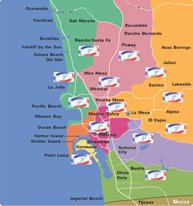
7919 Silverton Ave, San Diego, CA 92126





